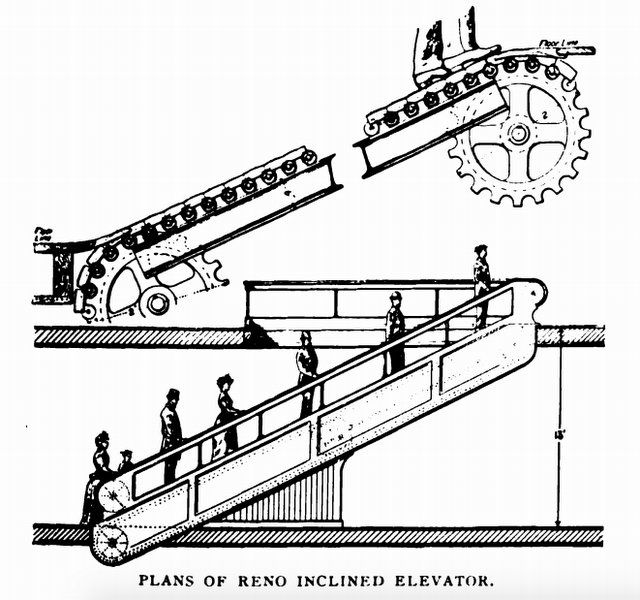A Salvaged Banksy Mural is Now on View in NYC
This unique Banksy mural goes up for auction on May 21st in NYC!


With the new exhibit Coney Island: Visions of an American Dreamland at the Brooklyn Museum, it seemed like an appropriate time to talk about the first escalator, which was installed in Coney Island in 1896. This was the era of invention around the world and Jesse W. Reno, who patented his “continuous elevator” or the “inclined elevator” in 1892, also designed such things as a submersible vehicle for salvaging shipwrecks, an early version of an aircraft carrier, and an electric rail system for the United States. The escalator came out of Reno’s plans for a double-decker subway in New York City which never came to be.
Rather than a functional apparatus, the incline elevator was a novelty and billed as an attraction on the Old Iron Pier at Coney Island. It had a 25% incline, and only went up 7 feet. It included the rubber handrails we have come to know and the teeth you see at the end of each side of an escalator today. It ran for two weeks in 1896, and then moved to a spot on the Manhattan side of the Brooklyn Bridge. In the course of its operation, it carried 75,000 passengers.

Plans for the inclined elevator from the 1896 Street Railway Review
Here’s a contemporary report in the 1896 Street Railway Review, which included the top photograph:
“A narrow incline of this kind has been given a practical test at the old iron pier, Coney Island, this fall, with the idea of demonstrating its practicality to the trustees of the Brooklyn Bridge, the officers of the elevated roads, and the Boston subway. The capacity of a single file elevator is 3,000 people per hour, and by increasing the width the capacity can be correspondingly increased. The system is manifestly superior to vertical elevators for many places because people are handled by it continuously and without delay and no attendant is required.”
Both Reno and a competitor, Charles Seeberger who purchased patents for another version of an inclined elevator from George A . Wheeler, later sold their ideas to the Otis Elevator Company. Seeberger coined the term “escalator” in 1900, putting together Latin root words scala, e and tor.
A popular photograph of Coney Island below, often confused for Reno’s initial inclined elevator installation actually dates from 1909. It is the mechanical escalator that took guests to the top of the Helter Skelter ride.
Next, read about the re-opened Coney Island Brewery and the history of the Cyclone, Coney Island’s legendary roller coaster. Discover Coney Island at the new exhibit at the Brooklyn Museum, one of our 15 must-visit exhibits this month.
Subscribe to our newsletter